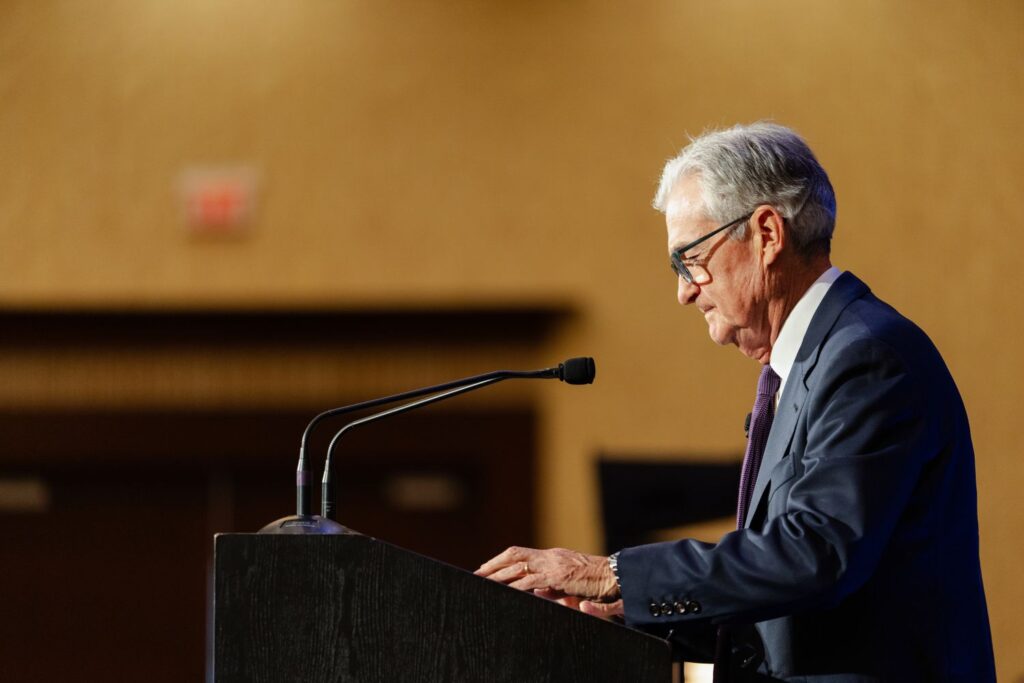:max_bytes(150000):strip_icc():format(jpeg)/GettyImages-2236498687-54edda12bd2e45898ad3b530d199131b.jpg)
Key Takeaways
- Members of the Federal Reserve’s policy committee are worried about both high inflation and the faltering job market, according to minutes from their most recent meeting released Wednesday.
- While the job market is the predominant concern, higher-than-expected inflation could deter future rate cuts.
- The minutes offered a barometer of Fed officials’ thinking in advance of the FOMC’s next meeting on Oct. 28 and 29.
If you’re awaiting interest rates to fall in the coming months, you probably won’t be disappointed—but inflation could easily spoil the party.
Officials at the Federal Reserve cut the central bank’s influential interest rate by a quarter of a percentage point last month despite inflation remaining near the top of their list of worries, according to minutes released by the Federal Open Market Committee Wednesday.
The minutes detailed the discussions that led the Fed to cut interest rates for the first time this year. Central bankers face a dilemma as they strive to fulfill their dual mandate of maintaining low inflation and high employment. Inflation remains above the Fed’s target of a 2% annual rate, while job growth has slowed to a crawl.
Fed policymakers have been wrestling with their options: cut the federal funds rate to boost job creation, or keep it higher for longer to wrestle down inflation. The Fed’s key interest rate influences the economy because it dictates borrowing costs on all kinds of short-term loans.
While markets widely expect the Fed to make two more cuts at its remaining meetings this year, Fed officials are keeping a close eye on inflation, suggesting higher-than-expected price increases in the coming months could derail those expectations.
“Two more rate cuts aren’t a done deal because policymakers aren’t letting go of their inflation mandate,” David Russell, global head of market strategy at TradeStation, wrote in a commentary.
How This Affects Your Finances
The minutes show that the Federal Reserve officials are still grappling with what they’re next right move could be. That could also make it harder to plan your financial future, as the federal funds rate influences borrowing costs on all kinds of loans.
Although all 12 members of the Fed’s policy committee voted to cut rates by at least a quarter-point, some said they would have been content to leave it unchanged.
“A few participants stated there was merit in keeping the federal funds rate unchanged at this meeting or that they could have supported such a decision,” the minutes said. “These participants noted that progress toward the Committee’s 2% inflation objective had stalled this year as inflation readings increased and expressed concern that longer-term inflation expectations may rise if inflation does not return to its objective in a timely manner.”
In recent public comments, Fed officials have emphasized that the central bank is in a tough spot, with its dual mandate pulling it in opposite directions. Most have supported gradual rate cuts, with the notable exception of Stephen Miran, newly appointed to the FOMC by President Donald Trump, who has advocated for steep reductions.
At least one Fed official, Minneapolis Fed President Neel Kashkari, is concerned tariffs are pushing the economy into a period of stagnant growth and high inflation, known by the portmanteau “stagflation.”
“We know that tariffs push up prices on the goods that we’re buying from abroad and they can slow down economic activity,” Kashkari said at an event in Minneapolis Tuesday. “Some of the data that we’re looking at is sending some stagflationary signal.”
It’s not just Fed officials who are worried about inflation and the job market.
Consumer expectations for inflation worsened, and expectations of job losses rose, according to a survey by the Federal Reserve Bank of New York released on Tuesday. The NY Fed’s Survey of Consumer Expectations showed one-year inflation expectations ticking up to 3.4% in September from 3.2% in August, while expectations for annual inflation five years from now rose to 3% from 2.9%.
The FOMC is scheduled to make its next policy decision on Oct. 29.


